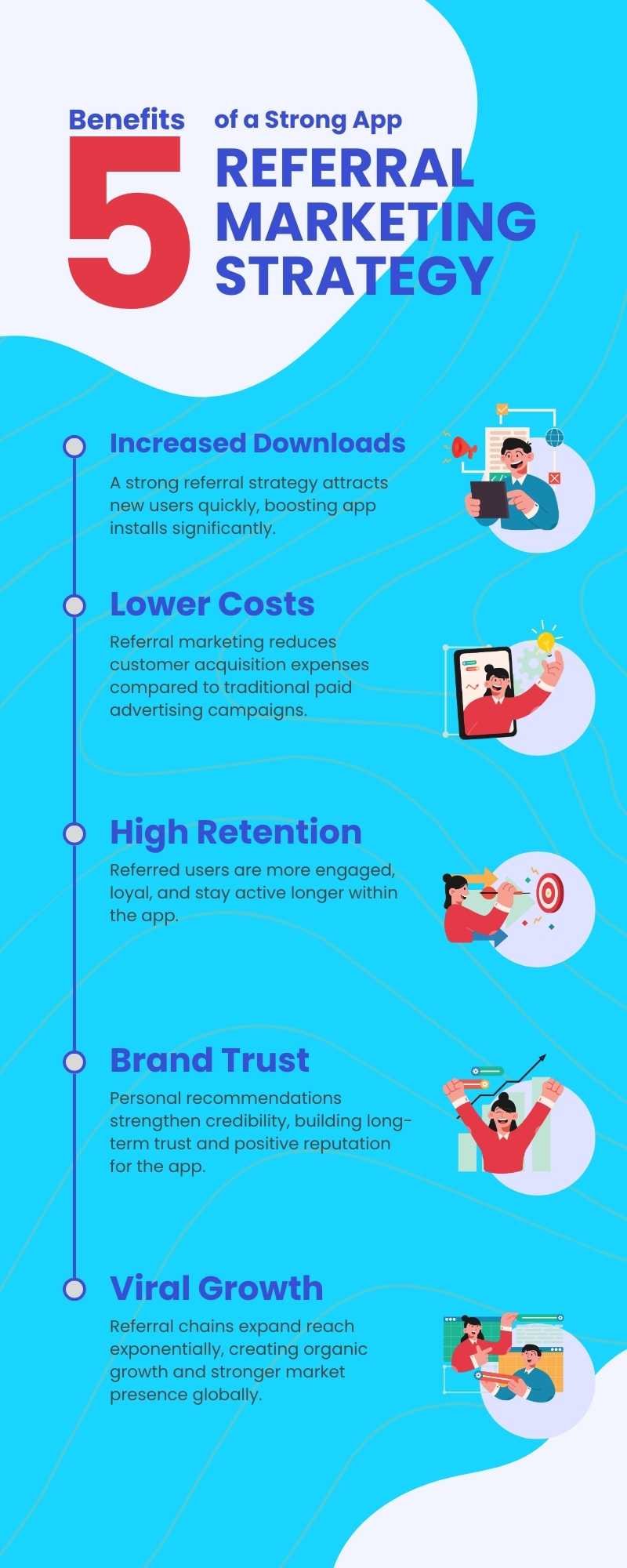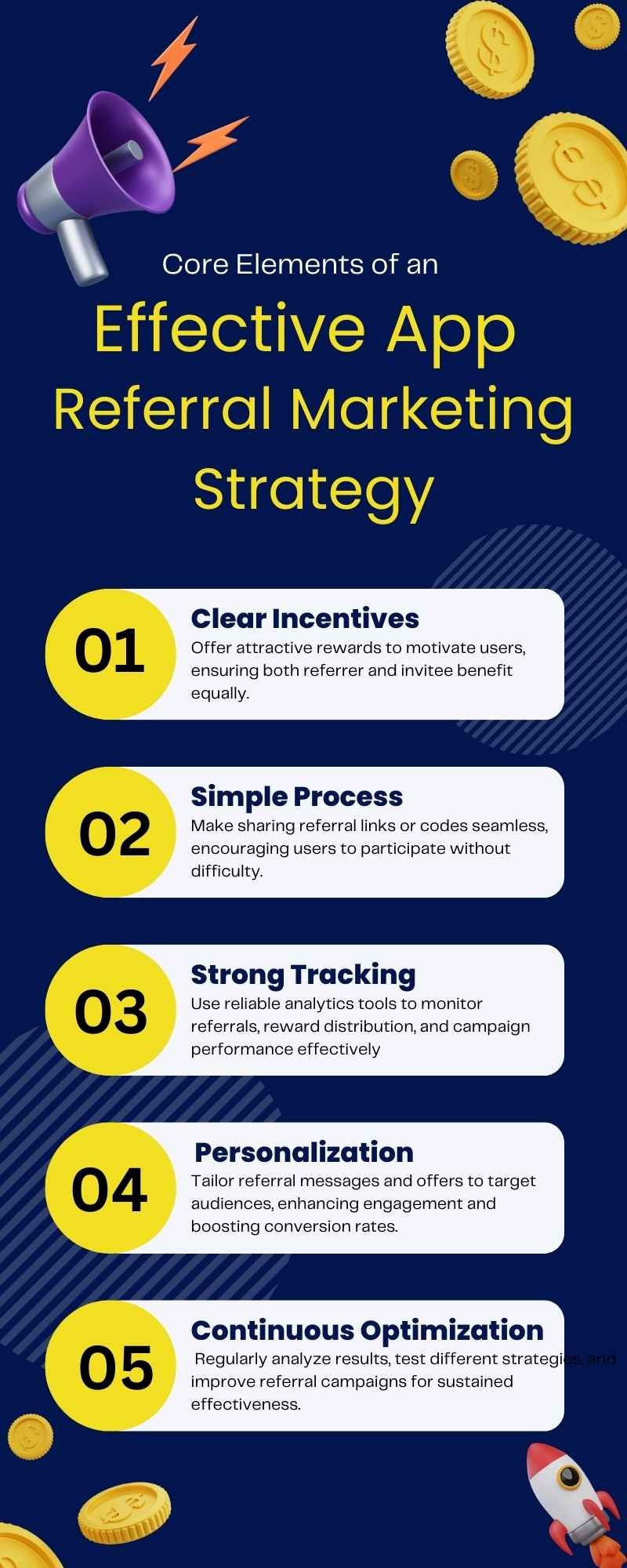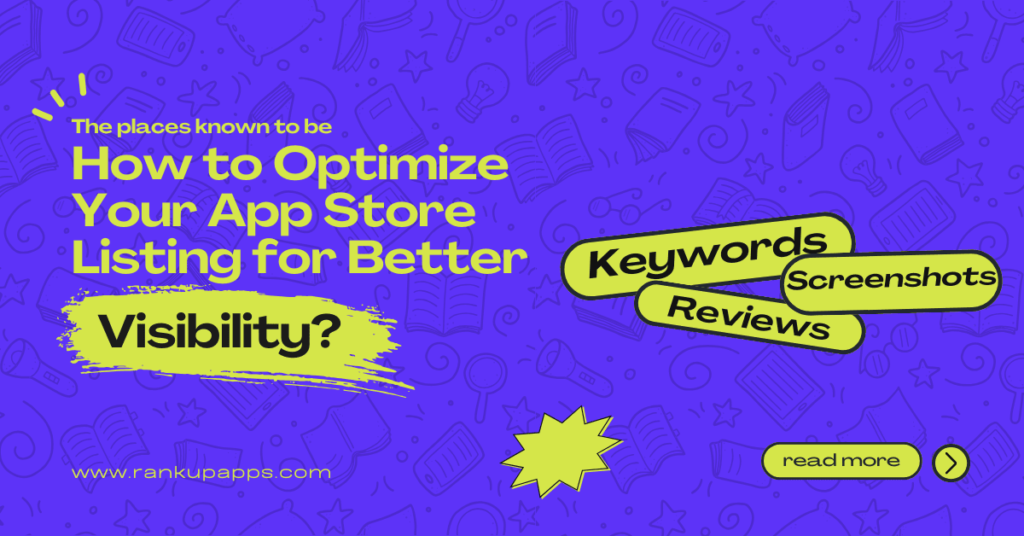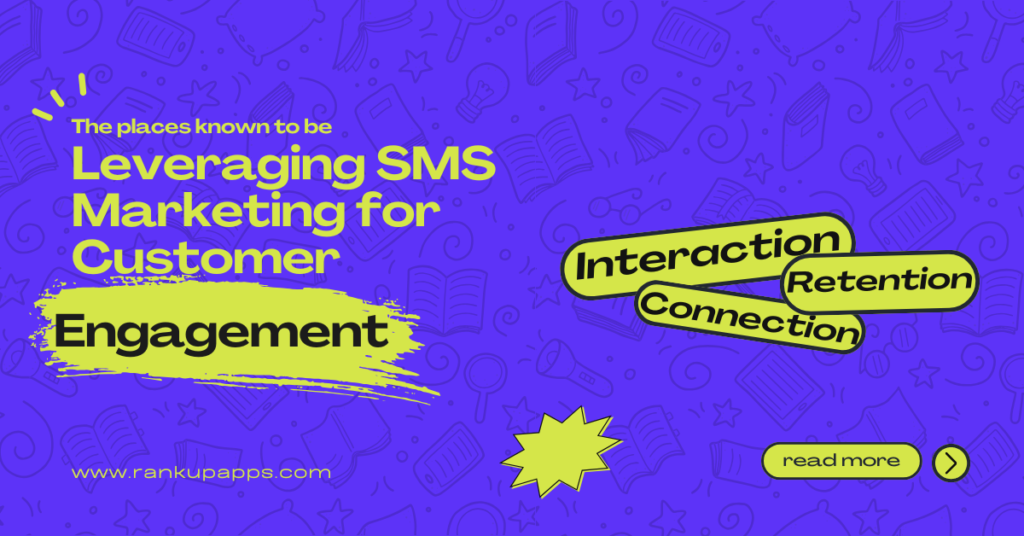A well-executed app referral marketing strategy can turn every user into a growth partner. The secret lies in making sharing effortless and rewarding. When users see real value, they naturally invite friends, driving viral adoption.
The key is relevance. Rewards must match user needs, whether it’s discounts, premium features, or exclusive perks. Simple referral flows, integrated into the app journey, encourage higher participation. Personalisation also boosts impact, tailored messages feel authentic, and build Trust.
Tracking and optimising results ensures long-term success. Brands that test different incentives, monitor fraud, and refine processes achieve sustainable growth. In today’s crowded market, apps that master referral strategies don’t just attract new users; they build loyal communities that continue to grow organically.
What is App Referral Marketing?
App referral marketing is a growth technique where existing users invite others to try an app, often in exchange for rewards. A strong app referral marketing strategy makes this process simple and rewarding, turning happy users into brand promoters.
Key Elements:
- User Advocates: Creates trust via word-of-mouth to lure in new clients.
- Incentives: Rewards like discounts, credits, or premium features encourage sharing.
- Seamless Process: Easy in-app sharing via links, codes, or social media boosts participation.
- Mutual Value: Both the referrer and the invitee benefit, ensuring higher engagement and loyalty.
Why Referral Marketing Matters for Apps
- Boosts Organic Growth: A well-designed app referral marketing strategy helps apps grow without relying only on paid ads. When happy users invite friends, downloads increase naturally, making growth more cost-effective and sustainable.
- Builds Trust Faster: People trust recommendations from friends more than any advertisement. A referral acts as social proof, showing that real users believe in the app’s value. This Trust speeds up adoption and strengthens brand credibility.
- Reduces Acquisition Costs: Paid campaigns can get expensive. Referrals lower customer acquisition costs because existing users do most of the promotion. With the right app referral marketing strategy, brands get more installs at a fraction of the budget.
- Encourages Loyal Users: Users who join through referrals often stay longer. They come with a connection, either a friend or family member who invited them.
- Creates Viral Growth Opportunities: Apps like Dropbox and Uber proliferated because their referral systems encouraged sharing at scale. When users are motivated by attractive rewards, referrals can multiply quickly and turn an app into a viral success.
Benefits of a Strong App Referral Marketing Strategy
A well-planned app referral marketing strategy can deliver multiple benefits for both startups and established apps. Below are the key advantages explained in simple, actionable points:
- Drives Organic User Growth: Referrals bring in users through trusted recommendations. Instead of relying only on ads, your app referral marketing strategy turns existing customers into promoters. For example, when a friend shares a ride-hailing app link, new users are more likely to download it.
- Reduces Customer Acquisition Costs: Traditional paid campaigns can be expensive. A smart app referral marketing strategy lowers costs by rewarding users only when a referral leads to an actual install or action. It makes it a cost-effective and performance-driven growth channel.
- Builds Trust and Credibility: Users trust suggestions from friends and family more than brand promotions. A referral instantly carries credibility, which speeds up decision-making. Apps like fintech wallets or delivery apps thrive because of this personal trust factor.
- Increases User Engagement and Loyalty: When users are rewarded for referrals, they feel valued. It not only encourages them to spread the word but also keeps them more engaged with the app. Loyalty deepens as users see both personal benefit and app value.
- Encourages Viral Growth: A strong referral loop can create viral momentum. One satisfied user invites five others, and the cycle continues. This compounding effect makes referral marketing one of the fastest ways to scale an app.
- Provides Actionable Insights: Tracking referrals helps brands understand which channels or incentives work best. This data allows continuous optimisation of the app referral marketing strategy, ensuring better results over time.
Core Elements of an Effective App Referral Marketing Strategy
An effective app referral marketing strategy goes beyond offering rewards. It combines psychology, simplicity, and technology to create a system where users naturally want to share. The following elements are the foundation of building a program that delivers real growth.
- Clear Incentives for Referrers and Invitees: Every strong app strategy begins with the right incentive. Users need a reason to share, whether it’s discounts, credits, or exclusive access. Double-sided rewards, where both the referrer and invitee benefit, create stronger motivation and trust. For example, Uber grew rapidly by rewarding both riders with free rides.
- Simple and Seamless Referral Process: A successful app referral marketing strategy keeps the process frictionless. Complicated forms or multiple steps discourage users. With one-tap sharing and automatic tracking, the referral journey feels natural. When users find it easy to invite friends, participation rates increase, and the campaign drives higher app installs organically.
- Personalized and Shareable Messages: Personalization boosts the performance of any app strategy. Instead of generic messages, apps should let users share pre-filled but customizable invites. It makes referrals feel more authentic. WhatsApp, for example, thrives on personalized invites that are easy to send through chat, making referrals look genuine.
- Multi-Channel Referral Options: A flexible app referral marketing strategy should give users multiple ways to share via email, SMS, social media, or in-app. Different users prefer different channels, and having more options expands the campaign’s reach. Multi-channel referrals also increase visibility and encourage faster adoption across diverse audiences.
- Attractive Visual Design and CTAs: Design plays a huge role in shaping the success of an app strategy. Eye-catching banners, engaging visuals, and clear call-to-action buttons encourage users to click and participate. A well-placed CTA like “Invite and Earn” or “Share to Get Rewards” makes the offer irresistible.
| Core Element | Description | Example |
| Clear Incentives | Offer rewards that benefit both referrers and invitees. | Uber offering free rides to both users. |
| Seamless Process | Keep sharing and tracking easy with minimal steps. | One-tap referral buttons inside apps. |
| Personalized Messages | Allow users to send customized or pre-filled invites. | WhatsApp personalized chat invites. |
| Multi-Channel Options | Provide email, SMS, social media, and in-app sharing. | E-commerce apps using multiple share modes. |
| Attractive Design & CTAs | Use visuals and strong CTAs to drive action. | “Invite and Earn” banners in-app. |
| Tracking & Analytics | Measure conversions, detect fraud, and optimize. | Dropbox tracking referral performance. |
| Integration with UX | Place referral prompts at high-engagement points. | Showing referral offers after a purchase. |
Types of Referral Programs for Apps
A successful app referral marketing strategy depends on choosing the right type of program. Different referral models appeal to various audiences, and the structure you pick can define how quickly your app grows. Below are the most effective types of referral programs that brands use to scale adoption and build loyalty.
1. Single-Sided Referral Programs
In this model, only the person sending the referral gets a reward. For example, a fitness app may give premium credits to users who invite friends. This type of app referral marketing strategy works well when your audience values personal benefits over shared rewards. It’s simple, direct, and easy to manage.
2. Double-Sided Referral Programs
Both the referrer and the invitee receive incentives. It creates a win-win situation that motivates both sides to act. Uber popularised this app strategy by giving free rides to both the sender and the receiver. Double-sided programs encourage faster adoption because users feel rewarded instantly, making it a powerful growth driver.
3. Tiered Rewards Referral Programs
Here, users unlock bigger rewards as they refer more people. For example, after five successful referrals, an app might offer a free subscription or exclusive features. This app referral marketing strategy keeps users engaged longer, as they work toward higher incentives. Gamifying referrals makes the process fun and highly motivating.
4. Gamified Referral Programs
Gamification adds excitement by turning referrals into a challenge or competition. For instance, a gaming app may create leader boards for top referrers, offering bonus coins or exclusive skins. This app referral marketing strategy taps into users’ competitive spirit and creates buzz around your app. It not only drives referrals but also boosts retention.
5. Limited-Time or Seasonal Referral Programs
These are designed to create urgency. By running special referral campaigns during festivals, product launches, or holidays, apps can generate quick spikes in downloads. This app referral marketing strategy works best when paired with attractive, time-bound incentives.
6. Influencer-Led Referral Programs
Sometimes referrals go beyond users and involve influencers or brand advocates. Partnering with influencers who share codes with their audiences can expand reach massively. This app referral marketing strategy combines trust, social proof, and scale, making it effective for apps entering new markets or targeting specific niches.
Best Practices for App Referral Marketing Strategy
A successful app referral marketing strategy starts with simplicity. Users should be able to share your app with friends in just a few clicks. The smoother the process, the higher the participation rate.
Second, make incentives attractive and relevant. For example, Uber grew rapidly by offering both riders and referrers free ride credits. This kind of double-sided reward keeps users motivated while delivering clear value.
Third, promote your referral program where users spend the most time. Highlight it inside your app, in push notifications, and through email campaigns. Visibility ensures more users engage with the program.
Fourth, track and analyse performance regularly. A data-driven app referral marketing strategy helps you see which channels drive the most referrals and what rewards work best. Use analytics to refine and improve continuously.
Finally, prevent misuse. Monitor for fake accounts or fraudulent referrals that could drain resources. A trustworthy program boosts long-term success.
When businesses follow these best practices, their appstrategy becomes a powerful engine for organic growth. Apps that continuously optimise their referral systems see higher installs, stronger loyalty, and better retention rates compared to those without structured programs.

Common Mistakes to Avoid
| Mistake | Why It Hurts | How to Avoid It |
| Overcomplicating the Process | If users find too many steps, they lose interest and drop off. This weakens your app referral marketing strategy and lowers participation. | Keep the referral flow simple. One-click sharing and easy reward redemption encourage more users to join. |
| Weak or Irrelevant Incentives | Offering rewards that don’t appeal to your target audience reduces motivation. For example, a generic coupon may not excite app users. | Design rewards aligned with user needs—extra features, premium trials, or wallet credits work better. |
| Poor Communication of Program | Users cannot join in a referral program if they are ignorant that it even exists. A lot of apps fail since they are not successfully sold. | Highlight the referral program in-app banners, notifications, and onboarding screens for maximum visibility. |
| Ignoring Fraud and Fake Referrals | Without tracking, people may exploit the system using fake accounts. This increases costs without delivering real users. | Use analytics tools and set rules like unique device verification to maintain authenticity. |
| Not Tracking and Optimizing Results | An app referral marketing strategy without data analysis is guesswork. Brands miss chances to improve conversions. | Track KPIs such as referral installs, active users, and ROI. A/B test incentives for better performance. |
Conclusion
Any app could experience substantial expansion with a solid app referral marketing strategy. By encouraging users to share with friends, brands gain both trust and visibility. Real-world examples like Dropbox doubling sign-ups prove its effectiveness. A strong app strategy works best when rewards are clear, the process is simple, and performance is tracked regularly. Apps that continuously refine their approach often see higher retention and lower acquisition costs. In a competitive market, adopting an app referral marketing strategy is not just smart, it’s essential for long-term success and sustainable user growth.




